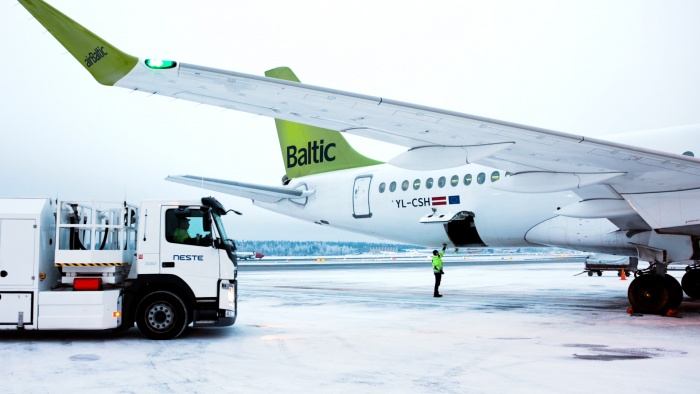Latvian airline airBaltic reports that in 2021 the company has increased the use of sustainable aviation fuel (SAF) by 20% compared to SAF volumes uplifted in 2020. This has been achieved in cooperation with Neste and other fuel providers on the airBaltic network. The collaboration with Neste started recently when airBaltic fuelled the first flight using an allocation of Neste MY Sustainable Aviation Fuel™.
Martin Gauss, Chief Executive Officer of airBaltic: “Our vision sees us becoming a sustainable carrier in the EU aviation market. At airBaltic, we believe that SAF will play a crucial role in ensuring the future of the aviation industry and help everyone involved to decrease their impact on the environment. Our use of SAF will increase further in 2022 and beyond.”
On December 28, 2021, Latvian airline airBaltic flight BT302 from Helsinki to Riga was performed with an allocation of 37% ofNeste MY Sustainable Aviation Fuel and 63% of conventional fossil jet fuel. It was thus far the highest proportion of SAF used by airBaltic in a single flight.
Neste MY Sustainable Aviation Fuel™, in its neat form and over the life cycle reduces greenhouse gas emissions by up to 80%* compared to fossil jet fuel use.
Tuomas Kulola, Head of Sales at Marketing & Services, Neste: “Neste is committed to help the aviation industry to reach its climate goals. We have developed a drop-in solution that is readily available and provides an immediate solution for reducing the greenhouse gas emissions of flying. All solutions are needed and every step is important. We’re happy to support airBaltic to meet their emission reduction targets.”
Environmental management of airBaltic is based on the principle of continuous and systematic improvement. It has identified the key environmental aspects of its operations, their impacts, risks and opportunities involved and has set targets related to them.
airBaltic currently flies a single-type fleet of 32 Airbus A220-300 aircraft, which at the moment is the greenest commercial aircraft in the world, as it is the first aircraft to have a transparent declaration of the life-cycle environmental impact, helping to reduce CO2 and NOX emissions by 20% and 50% respectively.
